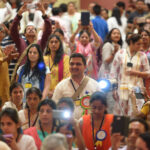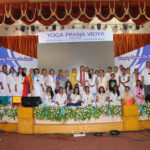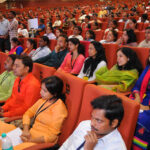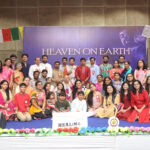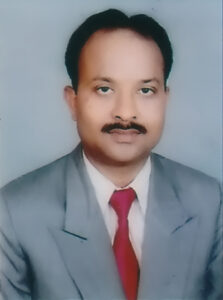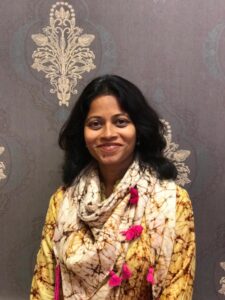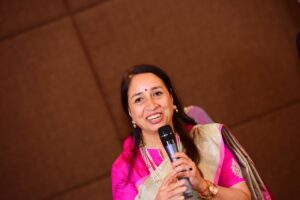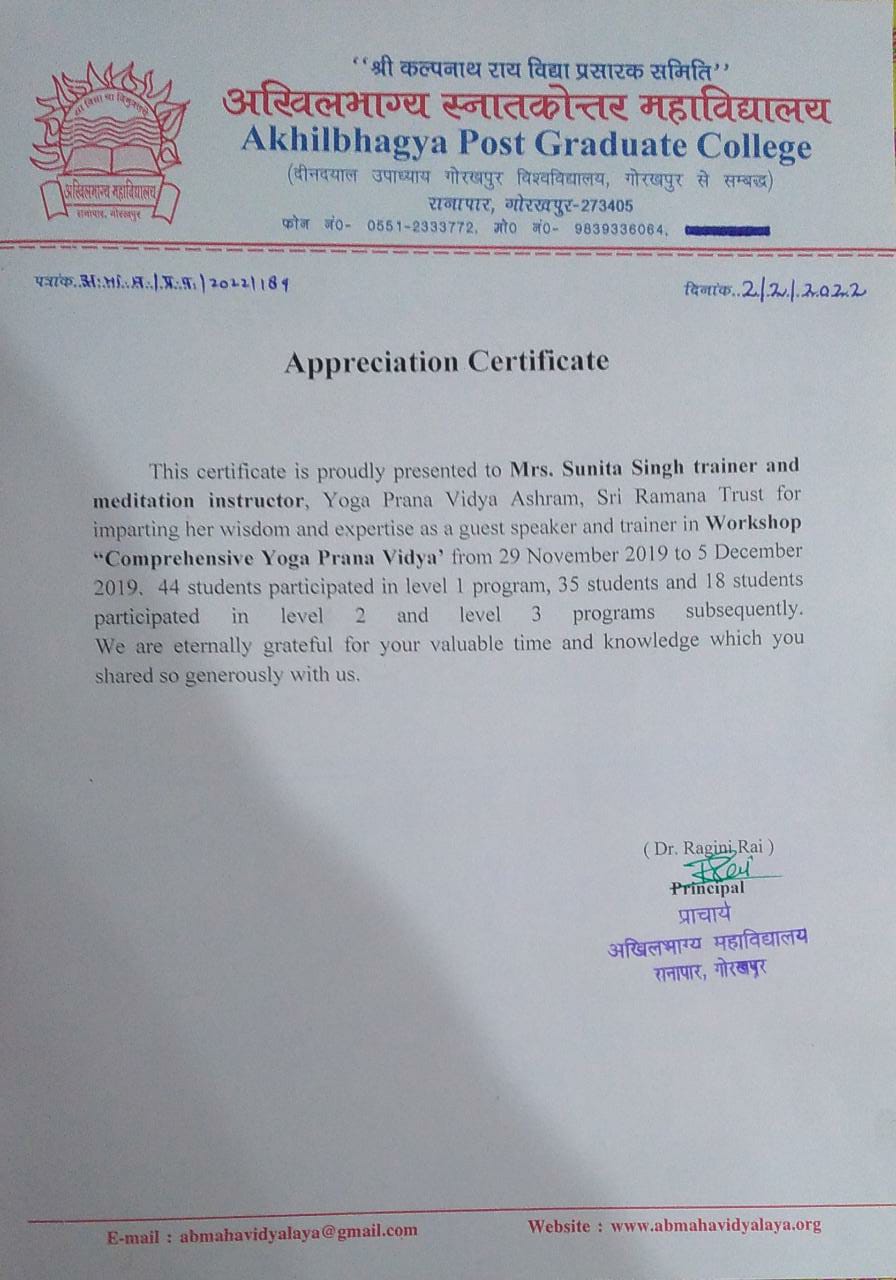Association with the Wise, a Story from Tripura Rahasya:

As per a legend, Tripura Rahasya was originally taught by Lord Shiva to Lord Vishnu, who in turn taught it to Lord Brahma. Later, Lord Vishnu incarnated on Earth as Sri Dattatreya and taught it to Parusurama. When Lord Dattatreya emphasized on the importance of vichara or discernment for the progress of human evolution, Parusurama inquired why only few have this ability or only few have been bestowed with this knowledge? Lord Dattatreya clarified that right company is the fundamental for growth and so, association with the Guru or wise is essential for advancement. He further illustrated this with a story.
There was a King of Dasarna, named Muktachuda. He had two sons Hemachuda and Manichuda. They were well mannered and educated. Once they went for hunting into a deep forest with other warriors. They shot down several wild animals. Soon, a violent tornado stormed with strongest winds and nothing could be seen. They tried taking shelter under rocks and in caves and got separated. Searching for protection, Hemachuda reached the hermitage of a Sage where he noticed an alluring damsel (a young unmarried girl of noble birth). Awed by her beauty, Hemachuda asked who she was. Noticing that he was afflicted by the tornado, the girl welcomed him and offered some fruits and juice. Then she acquainted herself as Hemalekha, the foster child of the Sage Vyaghrapada. He was enchanted by her, but did not express for fear of offending her. When the Sage arrived, Hemachuda prostrated before him and introduced himself. Vyaghrapada understood that Hemachuda was in love with his daughter. After contemplating for what would be the best course of action, he gave his daughter’s hand in marriage to Hemachuda. When Hemachuda went to his kingdom with Hemalekha, his father, Muktachuda also happily accepted Hemalekha and got them ceremoniously married.
They then passed their honeymoon in the palace, forest retreats and beaches. But the prince observed that Hemalekha was not as passionate about him as he was enamored by her. He then questioned her why she seemed to be in an absorbed state, unresponsive and indifferent to all the enjoyments. She replied that she was in search of the greatest joy that would never become distasteful. The prince at first found this very silly. She continued her curious questioning that happiness and misery were only subjective, that the same objects yielded either pleasure or pain depending upon the circumstances. Like, fire might be agreeable or disagreeable depending upon the season, its size and intensity. The same applied to all the riches, wife, children, kingdom, etc. She requested him to observe his father, who seemed to be worried all day, despite such enormous wealth, loving family and supreme success. She concluded that anything that was tinged with misery was not happiness. She explained that there was external misery that pertained to the physical body, which was mainly related to the nervous system and the internal misery was that of the mind whose cause was desire. She described the beauty of the beloved also to be subjective and a mental conception. The attraction was due to the repeated mental association of beauty. When the mind got stirred up, it excited the senses to fulfil the desires in a particular object. However, a composed mind might not get enthused in this manner. Even children did not relate beauty to love.
Hearing all this, Hemachuda felt sick of all the earthly pleasures. He became indifferent to these enjoyments. However, due to long formed habits, he struggled to completely stop indulging in them. At the same time, he wasn’t able to derive gratification from such indulgence as he felt guilty of engaging in them. Nothing seemed to appeal him, whether it was scrumptious food, fine clothing, cherished friends or any other riches or objects of desire. He grew increasingly sad and gloomy.
Hemalekha was aware of this change in him. She finally approached him and enquired the reason for the misery. He explained that after their last conversation, nothing could make him happy, like, a man sentenced to death couldn’t delight in any comforts offered to him.
Hearing this Hemalekha was pleased as she believed that such detachment generally arose in a person who was constantly inherent in his Heart center as the Self. She thus became keen on sharing the wisdom with him.
She narrated the story of her life as a parable. She told him that her mother introduced her to a friend who was very nice. But later, that friend had an unpleasant company. As Hemalekha loved her friend, she also got into the company of this new undesirable person. This undesirable person introduced her dull son to the friend of Hemalekha. They got married and had a son who was dull as his father, wicked and creative as the grandmother. Hemalekha could not break with her friend as she loved her a lot and also was dependent on her. Being pure, Hemalekha was not influenced by her friend’s husband and their association. Her friend handed over her son to Hemalekha’s care. When this child grew up, he married a girl who was very restless and clever. This girl pleased her husband by meeting all his desires by her creativity. The son was under the control of this restless girl and travelled hundreds of miles in a flash and returned. He became exceedingly restless too. They had five children who were very dedicated to their parents and were also entrusted to Hemalekha for raising. They grew up and constructed marvelous palaces and took turns to invite their father and entertained him. One had all sorts of music in his palace. Another had various designs; soft and fine clothing or bedding; some hard stuff too; hot, warm and cold things as well. The third mansion had some scenic views and some unappealing ones. The fourth son treated with various kinds of savory and sweet dishes and drinks. The fifth palace had diverse odors and scents of fruits, flowers, herbs; some were mild and others were intense. The father enjoyed thoroughly in all these places and also stole some of those things to share with his wife. He later married another woman who would consume all that he would get her instantly and be hungry still. She wasn’t satiated with all that the five sons from the earlier wife had to offer too. She soon had two children, one was very mean and the other was painful as fire. The father underwent too much distress with all this experience. Even Hemalekha’s friend was grieved with her son’s despair and lost consciousness on multiple occasions due to the pain. Hemalekha was also troubled with all this. The new wife was in good rapport with the other wife, her husband’s father and grandmother. She was also influenced by them. Hemalekha also lived with them for the sake of her friend, as a protector. But, was suppressed, fooled and afflicted by them at different instances. Hemalekha used to seek her mother at sleep time and experienced bliss during that time. Once Hemalekha’s friend, fed up and grief stricken, asked for her help. Under Hemalekha’s guidance, she got a good husband and killed her son and locked up his sons. She started experiencing Hemalekha’s mother’s presence often and gained bliss and eternal happiness. Hemalekha then told the prince that this was her story of bliss and that he could also attain the mother to realize the same.
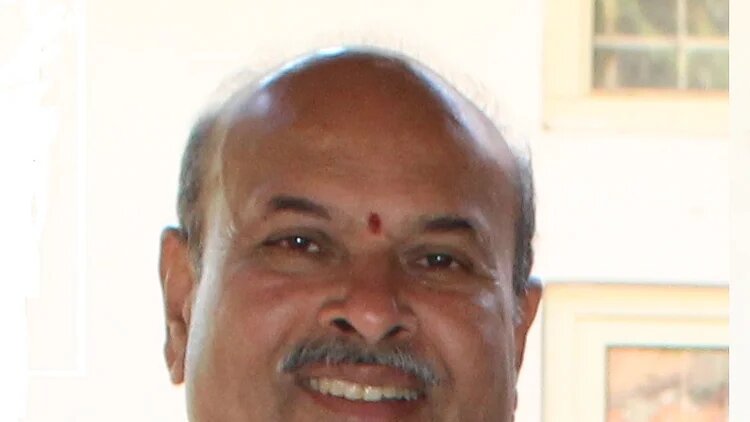
The prince found it all made up, meaningless and not real facts. He questioned the very significance of it. Hemalekha exclaimed that words from a Sage’s daughter, who was virtuous, could not be deceiving. She urged him to verify her words and have faith in her before he aspired for supreme bliss. Hemachuda then reasoned that faith must be placed only on the worthy and hence he can believe her only after he ascertained her worth. Hemalekha explained that there were no accepted standards to weigh so and also, the argument about the worthy or otherwise was endless. Hemachuda was still confused as to which scriptures, teachings or commentaries to be believed in, as some contradict the other. He looked up to his wife for clarity in these matters.
Hemalekha urged to start with a steady undistracted mind. She asked him to turn away from unnecessary logical arguments, but engage in purposeful discussions. She then stressed on the earnest efforts to be followed after such discussions. There may be many paths leading to emancipation, but choosing the right path required right discussion with the wise and immediate practice. So, she maintained that a discriminating mind, in conjunction with zeal and sustained effort were the key to accomplish the highest aim of life.
She alleged him to discern all that is transient, if not it could lead to only misery and pain. She asserted that Devotion to the Supreme God, the Creator of the Universe, was the right means to start with. She also suggested to take guidance from the scriptures to investigate the cause of this Creation. But cautioned to refrain from depending on systems that depended merely on sensory evidences. She also warned of systems that believed that Universe was eternal with no beginning and end. She pressed that action implies intelligence and so, the Primal Cause of Creation had originated from an Intelligent and Powerful Source, the Supreme God. She inferred that such a Supreme Being had to certainly be able to protect and elevate His own creatures. Therefore, she suggested to surrender to Him. She elucidated the different methods of approaching Him. That of worshiping for overcoming troubles, worshiping to gain wealth and the loving dedication of oneself towards God. The last she said was the best and the surest to accomplish results.
Hemachuda was so delighted to hear all this, and further questioned her about the Supreme God. She then clarified that God was all pervasive, all knowing, the preserver as well as the destroyer. He was Shiva, He was Vishnu and also Brahma! But she appealed not to consider Him to be having any bodies or aids to create the Universe. She clarified that man was an intelligent being with bodies as instruments to act for a purpose. However, the Supreme God was not limited by any such aids. She concluded that He is pure intelligence, Tripura and His consciousness is absolute and transcendental. But if he was not able to comprehend this pure state of God, she suggested that he could start with devotion to the concrete form of God, that was agreeable to him.
Hemachuda took to this worship with devotion and gained peace. He was absorbed in investigating the truth, which was imperative for liberation. He worshiped for few months and then returned to his wife. He requested her to explain the parable that she had earlier narrated. He no more believed it to be meaningless and was curious about its significance. Hemalekha was delighted to see him advance to this stage of development. She decided to enlighten him by solving the puzzle of her story.
In the parable she talked of her Mother, who was Transcendence, that is, Pure Consciousness. Her friend, the Discerning Faculty, got influenced by an undesirable friend, Ignorance. Friend’s son was Mind and his wife was Thought or Imagination. Their children were Sense Organs. Mind tried to steal from the Senses, the enjoyment of the sensual objects. Another wife in the story was Desire and her children were Greed and Anger. Her most important talisman in the story was Realization of the Self. The consummation of the discerning faculty was Samadhi! And her final admission into her Mother’s chamber was emancipation, or Nirvana! She then called this his course of life too!
Hemachuda was surprised with her wisdom and spiritual progress. He understood that the Realization of the Self and True Nature was the end of humanity. He further enquired about her Mother, who had no beginning and was our Real Nature. Hemalekha then spelt out that our Real Nature could not be described or perceived. That you could know the Mother, by first knowing the Self. This could be investigated by making the intellect transparently clear.
She then explained that the means to Realization was to discard all that he thought as “mine”. She asked him to analyze everything, discard and transcend them all. Whatever then remained, was the Self!
After receiving these instructions, Hemachuda hurried out into a separate palace, dismissed everyone and sat down in contemplation. He regarded his palace, treasure, empire, friends, attendants, women, horse and all were “mine” but not “me”! He also realized that everyone confused their bodies to their Real Self. He thus transcended his bodies, saying “they are mine, not me”! He grasped that the vital force or prana was not him and considered that even the mind was his tool only. He apprehended that he was always aware, but was not able to realize that pure state of awareness due to other factors that were not him. He now decided to let go of these factors, and not imagine them. He thus reached a state of thoughtlessness! A blank took over him and then he saw a blinding light with no end. When he regained normal consciousness, he was amazed. He repeated the procedure again and again. He experienced deep sleep and dreams once and intense bliss another time. He was perplexed with these experiences. So again, he sought help from his wife.
Hemalekha appreciated his efforts and then told him that restraining the thoughts is the best way. However, it could not produce Self-Realization. A product of an experience could not be Self. Self remains realized always. She explained this with an example of searching for a purse when lost. By calming the mind and recalling, it is located. But the purse was not produced by quietening the mind! It was already there!
She then asked him to pay attention! After controlling the thoughts, he experienced darkness. There was a state which was free from this effort of restraining the thoughts and before the experience of darkness. She declared that to be the state of perfect and transcendental happiness and urged him to remember that state. Realization could not be achieved by exerting effort. She further advised that many were misled in that state as they were all habituated to turn outward. People were distracted by their mental reflections in their mirror like luminous Self, ignoring the mirror or Self itself. This she compared to how people understood the Universe in the Space, but had no regard for the Space itself.
She therefore, asked him to realize his True Nature underlying the restless mind. She asked him to realize with a tranquil mind the state between sleep and wakefulness, between identification of 2 objects or the gap between 2 thoughts! She asked him to turn inward and control only a little to watch for the Self, remembering that the investigator is himself the Self. She cautioned him to watch out for the thought of “I see”, for what has transcended sight (waking and dream state) and no sight (deep sleep), that we are! We surpass these states and also the sense “I am” to enter the fourth state of Turiya.
Hemachuda followed these instructions, gained the state as just mentioned and experienced peace for a long time. He was in a state of Nirvikalpa Samadhi! When he opened his eyes, he saw his wife and closed them back again to fall back into that state. Hemalekha asked why he closed his eyes again. Hemachuda reluctantly replied that he was in a state of pure happiness and he pitied all who were not aware of their own Self. He even pitied her for not being in that state in spite of knowing it. Hemalekha then described that this experience was not complete wisdom. She questioned that how could such a state be perfect if it could be disturbed by opening of the eyelids, or by emotional and mental activity. She made clear that there were millions of knots which had to be cut off. Some of them were, identification with the bodies, differentiation of the world from the Self, “I shall lose it by opening the eyes”, “I know it”, “I will see”, “I am not this”, “This is non-self”, and the like. She asked him to find his blissful Self and the whole Universe reflected within and to abide as the Self. Also, to stop any thought that “I see the Self everywhere and in everything.”
Hemachuda now gained clarity and slowly became established in the perfect Self whether within or without! Being in that state always, he remained happy and ruled over his Kingdom, made it prosperous, conquered in wars, studied the scriptures, taught to others and lived a life for many years, as a Jeevanmukta, completely emancipated, while still alive!
When his father Muktachuda and brother Manichuda saw this difference in Hemachuda, that he was not touched by pleasures or sorrows, performed his duties well without any distractions or absent mindedness, engaged in duties being indifferent to loss or gain, they pondered, and then asked him the reason for his change. When they heard the state described by him, they too followed his instructions and became Jeevanmuktas. Hemachuda’s mother was also guided by Hemalekha to achieve illumination. Even the ministers, other courtiers, the citizens in their kingdom gained this wisdom and got liberated. They all acted in their professions in harmony with Creation. They lived in the present, never recalling the past or worrying of the future, always happy and in enjoyment. The Rishis called it the “Renowned City of Wisdom”.
Lessons Distilled
Dattatreya thus reminded Parsurama with this story that the cause of liberation was association with the wise, i.e., satsang or noble association.
There are two other points that are worth noting here. Hemachuda did not give up his kingdom and responsibilities even after achieving Nirvana. He continued with his duties and obligations, in fact, even better than before.
Another important learning is that being a King, Hemachuda could bring a change in or liberate the entire Kingdom. We may wonder initially as to why such a highly illumined soul as Hemalekha must marry a prince and be stuck in the doldrums of mundane life. But slowly as the story unfolds, we appreciate how, not only the powerful prince, but his entire family and all the citizens of his empire are led to the path of emancipation. Thus, right person must be sought in order to elevate the masses and accomplish the aim of Humanity. Hemalekha made the right choice of uplifting a powerful king, thus resulting in enlightening the entire kingdom.
Note: Tripura has many levels of interpretations. One of the deeper and profound meanings of Tripura is to reach and sustain the state of Turiya (beyond the manifested world/s or universe/s) by transcending the three states of consciousness: Jagrut (physical waking state), Swapna (state in Emotional or Lower Mental planes in waking or in dream condition), Sushupti (a unified state in Higher Mental plane in deep sleep or meditation)
You may also try our YPV Sadhana app which is available in various languages. It has guided audios for the breathing exercises, Forgiveness Sadhana and Planetary Peace Meditation. These techniques also boost and sustain your immune system.
Reference: Tripura Rahasya, The Mystery beyond the Trinity – translated by Swami Sri Ramanananda Saraswathi; Group study and many group discussions by YPV practitioners on the subject.
YPV Sadhana App
Download YPV Sadhana app to boost immunity, emotional balance and positive attitude towards life.
Yoga Prana Vidya Ashram Sri Ramana Trust Hosur – Thally Main Road Near Ubbanur Lake Thally, Krishnagiri Dist Tamil Nadu – 635118, INDIA
Contacts
Disclaimer :
Yoga Prana Vidya is not intended to replace other forms of healing modalities including allopathy and it is also complementary including alternative.
In case of Severe or Persisting symptoms, refer to a medical doctor and or a Certified Yoga Prana Vidya Healer.
“Currently we do not have any connection / affiliation / association with and are not authorised / represented / endorsed / certified / maintained / sponsored by Master Choa Kok Sui and/or organisations established by the Master and/or subsidiaries / affiliates of such organisations.”
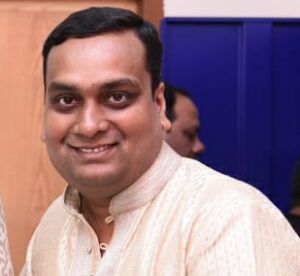
Dhaval Dholakia is a certified YPV healer for 16 years. He is also a mechanical engineer and has worked in Plastic Processing Machinery for 25 years. He resides in Ahmedabad.
Dr. S. K. Singh is a Arhat Trainer having more than 20 years of YPV healing and teaching experience. He is also trained in Kriyashakti & Fengsui and completed the one year intensive program in 2016. He has organized many higher level YPV training workshops and retreats. He completed his Master’s degree in Science and has a doctorate in Environmental Biology. He hails from Varanasi.
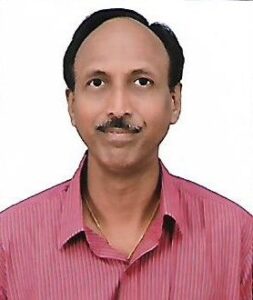
Madhu Sudhir is a senior YPV trainer since 2004. She has trained over 2500 students and more than 50 trainers who are also propagating YPV practices. She has done YPV healing for more than 7000 people since 2006. She is the secretary of the Mysore YPV Healers Association since 2011. She is also associated with JSS University – Dental College as a guest lecturer for “Holistic wellness through YPV” for BDS 1st year students. She has also conducted various seminars on YPV teachings. She graduated in commerce from Bangalore University and also has a diploma in architecture. She also works as a Vaastu consultant for businesses, constructions, plots & houses.
Raghu N is a Arhat Trainer having over 22 years of YPV healing and teaching experience. He founded “Master YPV Trust Nanjangud” in 2019 and conducting regular service activities through this trust in his role as President. He also started the first independently located YPV centre in Nanjangud in 2014. He has previously attended the one year Spiritual Intensive Program for 2015-16 conducted in Sri Ramana Trust Ashram. He also has 7 years of experience working as a secretary at “Mysore YPV Healers Association” during which he nurtured many healers. Raghu conducts teachings in Kannada, English and Hindi languages. He has also completed a B.Sc. and B.Ed. from the Mysore University.


1: Name : Lakhsmi Devi

1. Name – Vishakha Karnani
2. address/ centre – 316, Sai Kripa Colony,
Indore 452002, Madhya Pradesh
3. educational qualification – B.A. Loreto College, Kolkata. Then worked as a photo journalist & a freelancer (children photography)
4. any paper presentation – COVID 19 case report in Innovative publication journal. July 2020
5. any specific achievements – part of the organising team in the first SIP , Pune, 2015. Thereafter involved in organising public darshan and Compassionate Parenting and nurturing programs in various cities like Indore, Nagpur, Raipur, Pune, Kolkata and Ichalkaranji (kolhapur)
6. Since 2006. Got introduced to the world of energy in Kolkata and shifted to Indore in 2008 to spread the work in Central India. Currently working in M.P, Chattisgarh, Maharashtra, Rajasthan, North East India.
Radha Ganesh is presently working for Yoga Prana Vidya Organization as Senior Arhat trainer and Ethics committee member. She is a Senior Arhat Trainer and certified YPV healer with over 18 years of experience. She completed the one-year spiritual intensive program at the YPV ashram in Thally. She has been trained in basic, advanced healing and psychotherapy at World Pranic Healing. Radha worked in Unnathi Healing Foundation Trust as a healer and trainer. She also worked in MS Ramaiiah Hospital Pranic Healing Department, Ayush Arogya Dhama. She has taught YPV teachings in several schools and also conducted classes for nursing staff, pharma students among others. She regularly conducts an Arhat Marathon on every last Sunday of the month at Karnataka Pranic Healing foundation trust since last 3 years. Radha has completed her M.A. in English from MG University, Kerala.
Yoga Prana Vidya
| Account Name : | Sri Ramana Trust |
| A/C No: | 566438417 |
| Name of Bank: | Indian Bank |
| IFSC Code: | IDIB000T060 |
| Address: | Police Station Road, Thally, Krishnagiri |




